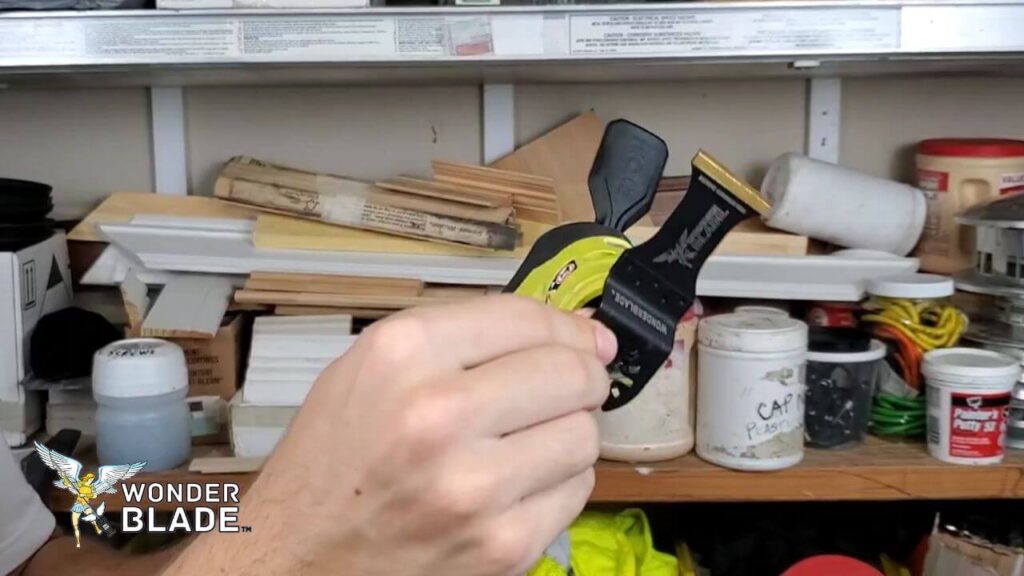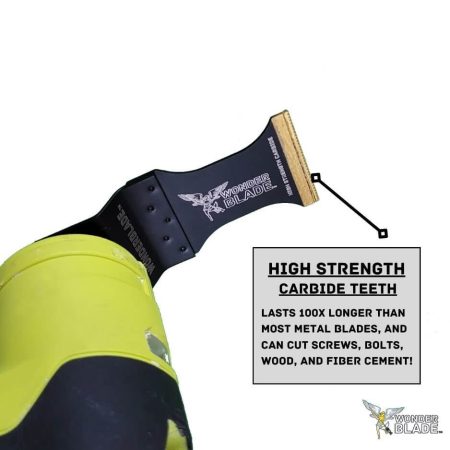
If you want to get the most out of your oscillating tool and keep it performing at its best, it’s important to have your oscillating tool blades in good condition. The life of the tool and its cutting effectiveness may be greatly improved with routine maintenance and the replacement of dull blades (we have a solution on that later in this article).
Following these guidelines, your oscillating tool blades will last longer and perform better across various cutting, sanding, and scraping tasks.
The effectiveness and security of an oscillating tool depend on its blades being kept in good condition. Some things to keep in mind are as follows:
It is essential to keep the blades of an oscillating tool in good condition for its safe and effective operation. Some advice on how to care for oscillating cutting blades like carbide:
Always wipe the blades off with a dry cloth or brush to remove any leftover dirt or residue after use. Use a cleaner designed for the purpose, yet safe for the blades, if there is stubborn debris to be removed.
A dull blade reduces a tool’s efficiency and may be dangerous, so it’s important to get a quality oscillating tool blade so that this doesn’t have a great impact on your project.
You can prevent corrosion and prolong the life of your oscillating tool blades by applying a specific oil or spray to lubricate the blades to prevent corrosion and improve performance.
Keep your oscillating tool blades in a dry, cold area while they aren’t in use, in a container, pouch, or tool bag. If you want to keep the blades in good condition, it’s best to keep them out of moist or humid environments.
Safe and effective usage of an oscillating tool may be promoted by keeping its blades in good condition through regular cleaning, lubrication, and storage. Oscillating tool blades, like diamond segmented blades and the tool itself, may benefit from regular maintenance, saving you both time and money in the long run.
If you want to keep your oscillating tool working well and safely, you must often change the blade (we have a solution on that later in the article). If you need assistance changing the blade, consider the following:
Following these guidelines will help you change the blade on your oscillating tool safely and effectively, restoring it to peak performance.
Among other operations, oscillating tools are multipurpose electric tools that may sand, grind, cut, and scrape. If you want to get the most out of your oscillating tool, you need to know how to operate it correctly and safely, and you also need to get the ideal blade, like a carbide blade.
Using the proper attachment for your oscillating tool is a great way to maximize its usefulness. Blades and attachments, such as sanding pads, scraping blades, and cutting blades, come in various shapes and sizes to suit multiple jobs.
Besides causing problems for the tool or the material you’re working with, using the incorrect attachment might reduce the tool’s effectiveness and lead to a more-than-satisfying experience.
The correct speed for the oscillating tool should also be used. Regarding sanding and polishing, slower rates are preferable, whereas higher speeds are ideal for cutting and grinding. When using a tool, applying just the right amount of pressure is crucial to avoid breaking or rapidly dulling the blade.
Choosing the appropriate blade to get the most out of your oscillating tool would be best. There are many blades for various materials, including masonry, metal, plastic, and wood. Damage to the material or rapid blade wear might result from using the incorrect blade. Because different tasks call for different blade sizes and shapes, getting the specifications right is crucial.
If you want to avoid injury and damage to the tool or the material you’re working on, you must know how to use an oscillating tool appropriately. Safety goggles, gloves, and a dust mask are essential for maximizing your safety on the jobsite. Use the tool on a safe and secure surface, and read and follow the manufacturer’s guidelines on your oscillating multi tool before getting started.
Avoid putting your hands near the blade, and don’t try to make it perform anything it wasn’t intended to accomplish. Always keep both hands on the instrument, and never bring it close to your body. Finally, unplug the tool before making any alterations or swapping out the blade or accessory.
If you want to get the most effective use of your oscillating tool and get the most help out of your investment, you need to keep the blades in good condition.
Regular maintenance keeps your blades sharp and in good operating order for longer. Here at WonderBlade™ is where you can find the highest-quality oscillating tool blades that long a long time, backed by our WonderBlade™ Guarantee. Following these guidelines, your oscillating tool will serve you well for many years.

*Save yourself time, money, and hassle with the best oscillating tool blade in the industry that lasts many cuts through wood, screws, fiber cement, sheetrock, plastic, and more.*
Submit your questions, thoughts, or concerns to help us make better content just for you: